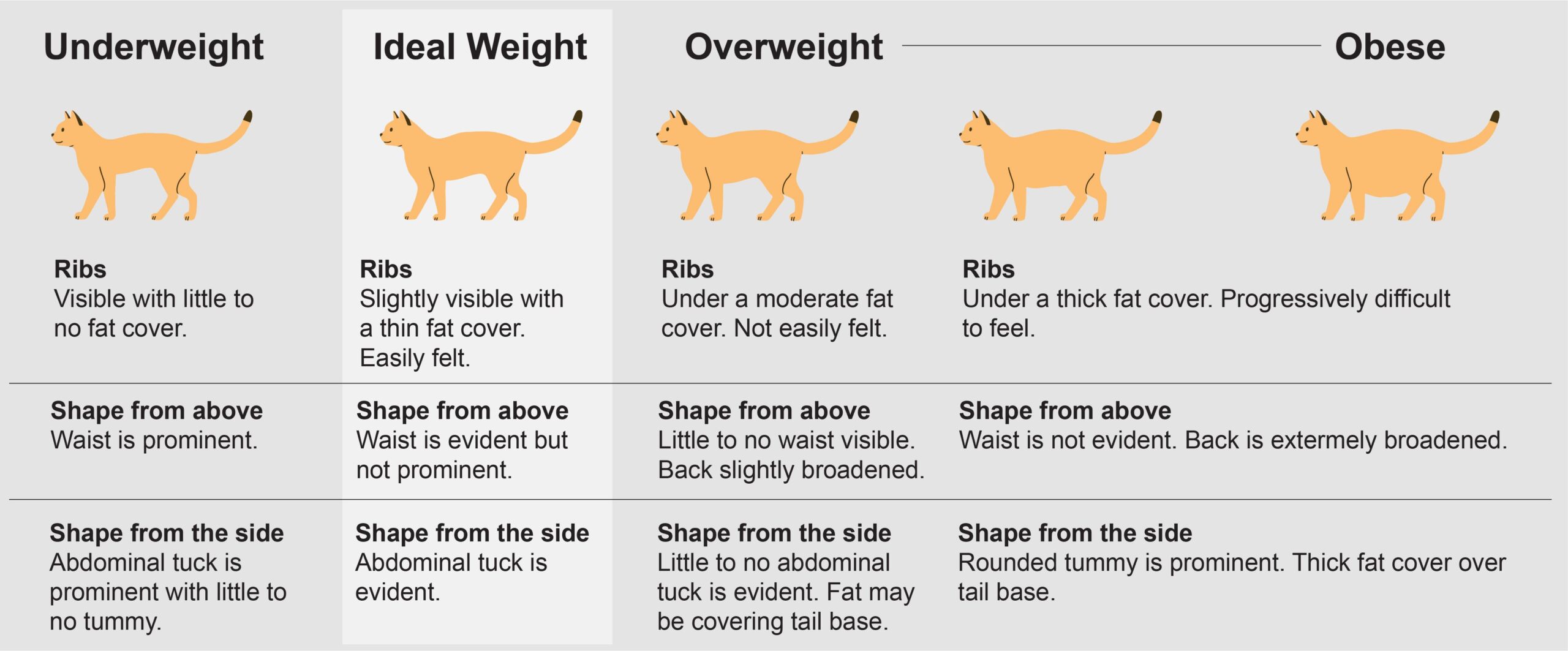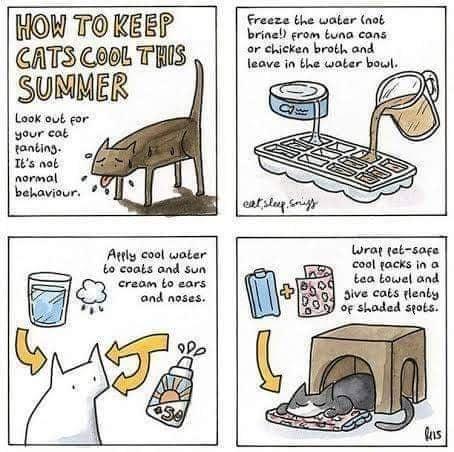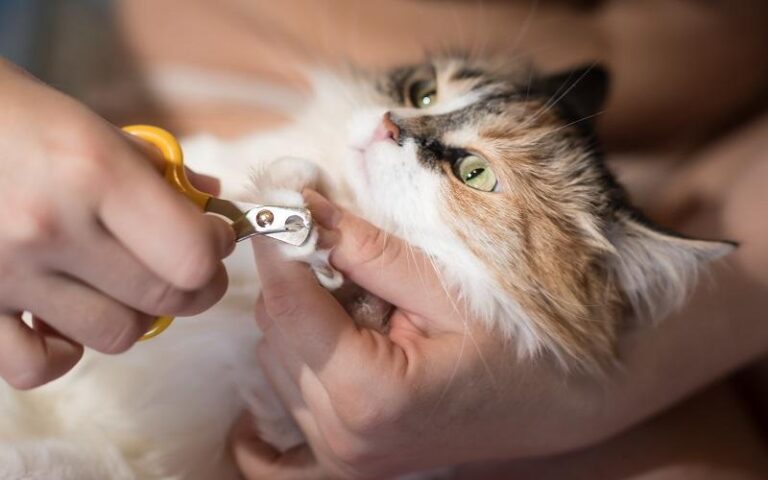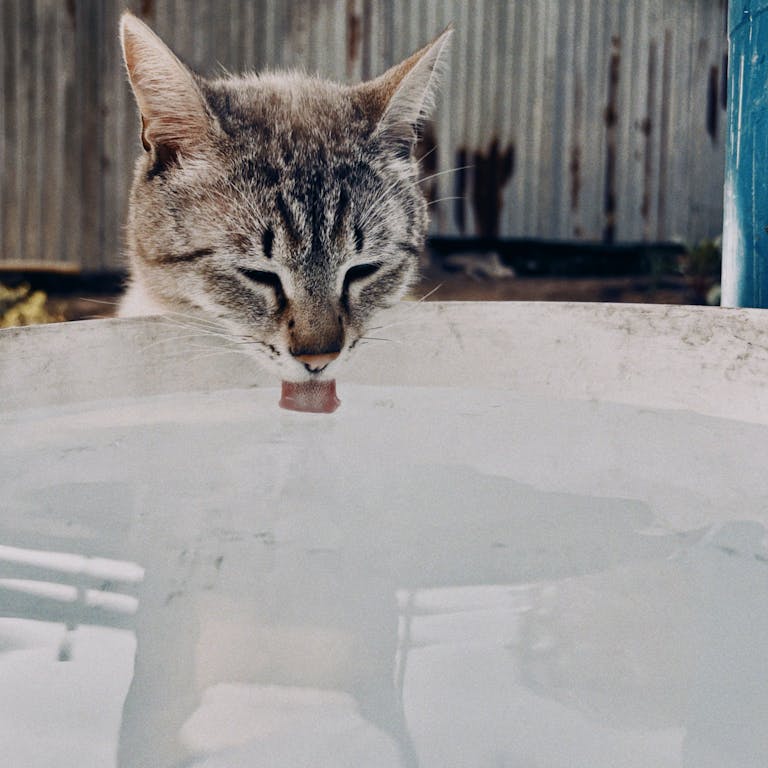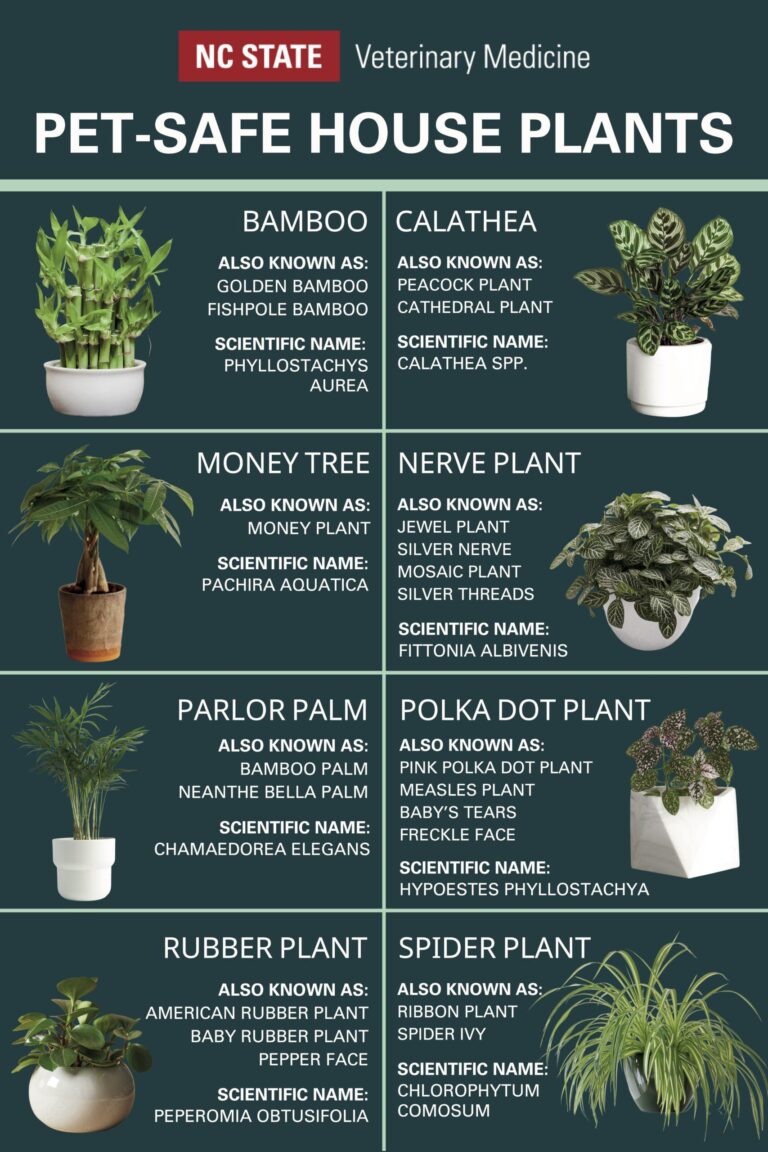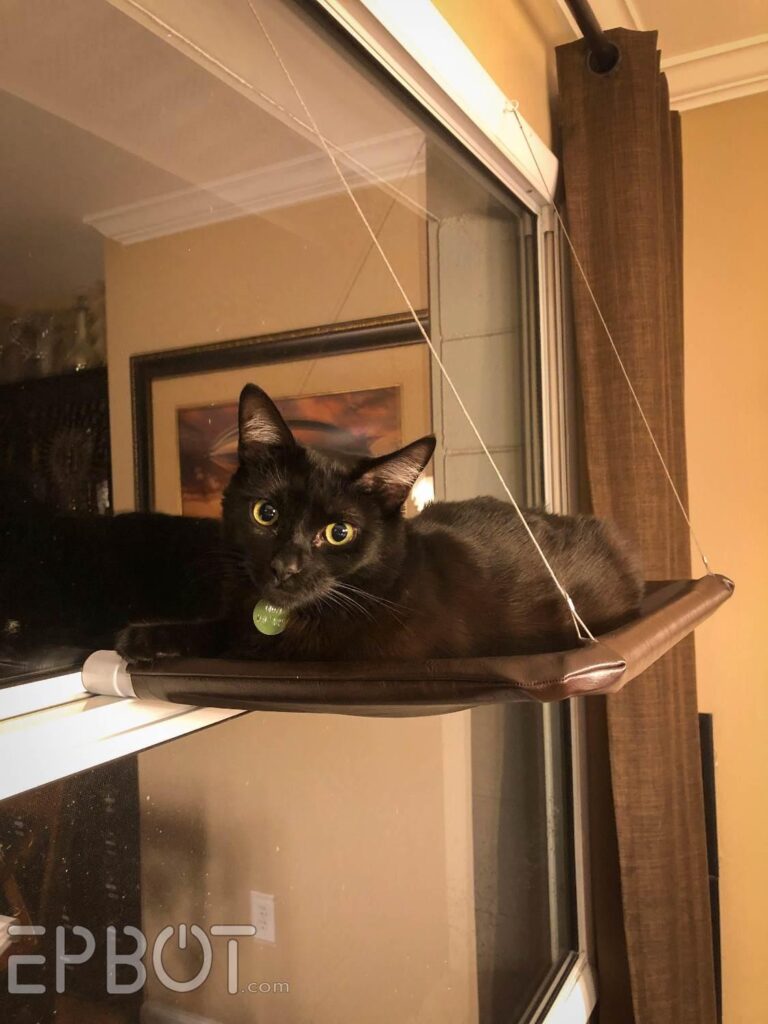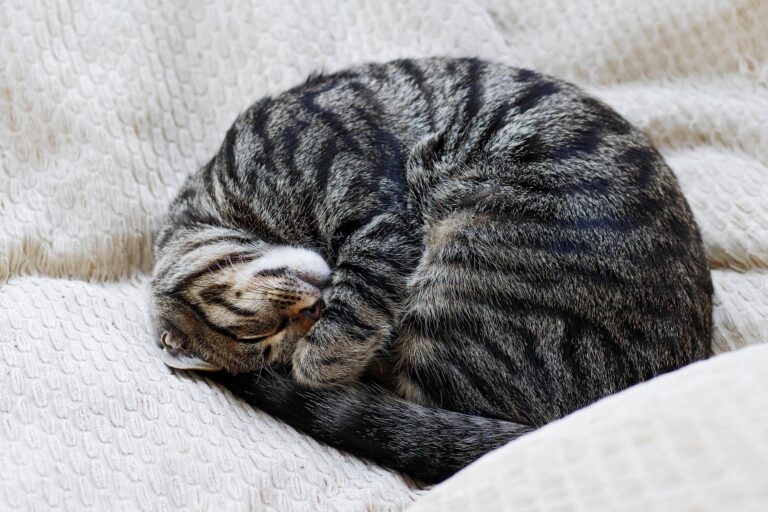Is My Cat Overweight? 7 Signs Your Cat Might Be Too Chubby
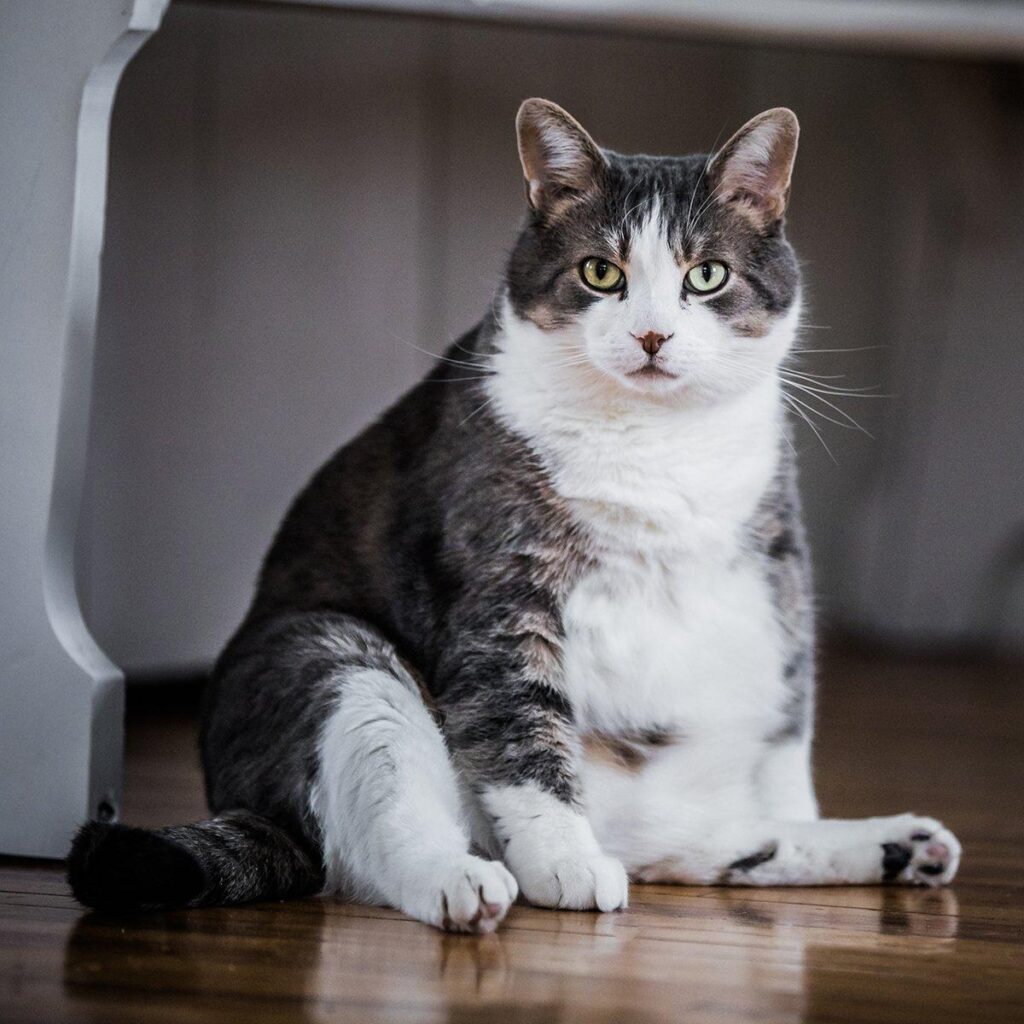
Is My Cat Overweight? Signs, Tips & Solutions
Worried your furry friend might be packing on a few extra pounds? Wondering “is my cat overweight?” This guide will help you recognize the signs, understand the risks, and take action to keep your cat healthy and happy. Overweight cats are at greater risk of health problems like diabetes, arthritis, and reduced mobility according to the ASPCA. In this article, we’ll walk you through how to tell if your cat is overweight, the health impacts, and simple steps you can take to help your cat maintain a healthy weight..
Why Knowing If Your Cat Is Overweight Matters
Cats are naturally agile hunters, but excess weight can slow them down, reduce activity, and lead to chronic health problems. Being overweight or obese impacts their quality of life dramatically, causing difficulties in grooming, mobility issues, and increased risk for serious diseases such as diabetes mellitus and heart problems. Many cat owners don’t realize their pet is overweight until health issues arise. If you’ve ever wondered, is my cat overweight, it’s important to look out for early signs and act before problems develop.. Recognizing the early signs of a cat gaining too much weight allows pet owners to intervene before it becomes critical.
The Signs: How to Tell If My Cat is Overweight
Here are some key physical and behavioral signs that indicate your cat may be overweight:
-
- Difficulty Feeling Ribs: In a healthy cat, you should easily feel the ribs without pressing hard. If the ribs are hard to detect under thick fat, it’s a warning sign.
- Bulging Abdomen: A distended belly hanging below the abdomen while standing or walking, sometimes called a “fat pad,” is common in overweight cats.
- Lack of a Defined Waist: From above, your cat should have a slight hourglass shape behind the ribs. A round or square shape often indicates excess weight.
- Reduced Mobility & Activity: Overweight cats may be less playful and reluctant to jump or climb.
- Difficulty Grooming: Excess weight can reduce flexibility and cause grooming challenges leading to matted fur or hygiene issues.
Visual Body Condition Scoring (BCS) System
Many veterinarians use a 9-point Body Condition Score scale to assess a cat’s weight. Here’s a simple summary table to help you estimate your cat’s body condition:
| Score | Description | Key Features |
|---|---|---|
| 1-3 (Underweight) | Ribs, spine, and pelvis bones visible; minimal fat cover | Prominent bones, no waist |
| 4-5 (Ideal) | Ribs palpable without excess fat, clear waist behind ribs | Bones easily felt, defined waist, abdominal tuck |
| 6-9 (Overweight/Obese) | Ribs difficult to feel under fat; no visible waist; fat deposits | Rounded abdomen, broad back, fat padding |
How to Weigh Your Cat at Home
Regularly tracking your cat’s weight is an effective way to monitor their health. Here’s a simple method to weigh your cat at home:
-
- Step on your bathroom scale and record your weight.
- Pick up your cat and immediately step on the scale again.
- Subtract your weight from the total — this is your cat’s weight.
Keep a weight journal or digital log to track changes over weeks and months. If you ever found yourself wondering, ” Is my cat overweight?” having a journal can ease those worries and help you stay informed
Why Cats Gain Weight: Common Causes
Understanding what causes your cat to become overweight helps you address the problem effectively:
-
- Overfeeding: Excessive treats, free-feeding, or over-portioning meals.
- Lack of Exercise: Indoor cats especially have fewer opportunities to burn calories.
- Age and Metabolism: Older cats have slower metabolisms and lose muscle mass.
- Medical Issues: Hypothyroidism, diabetes, or other illnesses can contribute.
Practical Tips to Help Your Overweight Cat
Feed a Balanced Diet
Use veterinarian-recommended cat food formulated for weight management. Avoid high-carb or filler ingredients and measure portions carefully.
Incorporate Regular Play & Exercise
Set aside daily play sessions using wand toys, laser pointers, or interactive feeders to stimulate activity and burn calories.
Limit Treats & Human Food
Treats should be limited to under 10% of daily calorie intake. Avoid feeding table scraps that are often calorie-dense and unhealthy for felines.
Consult Your Veterinarian
If you’re still asking “is my cat overweight?”, it’s time to get a professional evaluation. Tailored advice and potential medical tests could make your weight loss plan safer and more effective.
Case Study: Bella’s Weight Loss Journey
Bella, a 7-year-old domestic shorthair, was 15% overweight with noticeable difficulty grooming herself. After her owner started feeding a portion-controlled diet and daily playtime of 15 minutes twice a day, Bella lost 1.5 pounds in 3 months. She became more active and regained her shiny coat and ability to self-groom comfortably.
Signs to Watch For if Your Cat Is Overweight
Early detection of overweight cats can prevent serious health complications. Watch for these red flags:
-
- Breathing difficulties or panting after mild activity
- Reluctance to jump or climb
- Visible abdominal sagging or a “football” shape from below
- Dirty or unkempt fur due to grooming issues
- Increased sleeping and less playfulness
If you’re still wondering is my cat overweight, it’s a good idea to consult a vet for a professional opinion.
Conclusion: Keeping Your Cat Fit & Healthy
Helping your cat maintain an ideal weight is crucial for their overall health, happiness, and longevity. By learning how to tell if your cat is overweight and taking proactive steps through diet, exercise, and regular monitoring, you can keep your feline companion in top shape. Remember, weight management is a team effort between you and your vet—always seek advice before starting any major changes.
Start today by feeling your cat’s ribs, measuring their weight, and observing their daily activity. Your cat will thank you with many more playful, loving years together!
Is My Cat Overweight? Signs, Tips & Solutions
Worried your furry friend might be packing on a few extra pounds? Wondering “is my cat overweight?” This guide will help you recognize the signs, understand the risks, and take action to keep your cat healthy and happy. Overweight cats are at greater risk of health problems like diabetes, arthritis, and reduced mobility according to the ASPCA. In this article, we’ll walk you through how to tell if your cat is overweight, the health impacts, and simple steps you can take to help your cat maintain a healthy weight..
Why Knowing If Your Cat Is Overweight Matters
Cats are naturally agile hunters, but excess weight can slow them down, reduce activity, and lead to chronic health problems. Being overweight or obese impacts their quality of life dramatically, causing difficulties in grooming, mobility issues, and increased risk for serious diseases such as diabetes mellitus and heart problems. Recognizing the early signs of a cat gaining too much weight allows pet owners to intervene before it becomes critical.
The Signs: How to Tell If My Cat is Overweight
Here are some key physical and behavioral signs that indicate your cat may be overweight:
-
- Difficulty Feeling Ribs: In a healthy cat, you should easily feel the ribs without pressing hard. If the ribs are hard to detect under thick fat, it’s a warning sign.
- Bulging Abdomen: A distended belly hanging below the abdomen while standing or walking, sometimes called a “fat pad,” is common in overweight cats.
- Lack of a Defined Waist: From above, your cat should have a slight hourglass shape behind the ribs. A round or square shape often indicates excess weight.
- Reduced Mobility & Activity: Overweight cats may be less playful and reluctant to jump or climb.
- Difficulty Grooming: Excess weight can reduce flexibility and cause grooming challenges leading to matted fur or hygiene issues.
Visual Body Condition Scoring (BCS) System
Many veterinarians use a 9-point Body Condition Score scale to assess a cat’s weight. Here’s a simple summary table to help you estimate your cat’s body condition:
| Score | Description | Key Features |
|---|---|---|
| 1-3 (Underweight) | Ribs, spine, and pelvis bones visible; minimal fat cover | Prominent bones, no waist |
| 4-5 (Ideal) | Ribs palpable without excess fat, clear waist behind ribs | Bones easily felt, defined waist, abdominal tuck |
| 6-9 (Overweight/Obese) | Ribs difficult to feel under fat; no visible waist; fat deposits | Rounded abdomen, broad back, fat padding |
How to Weigh Your Cat at Home
Regularly tracking your cat’s weight is an effective way to monitor their health. Here’s a simple method to weigh your cat at home:
-
- Step on your bathroom scale and record your weight.
- Pick up your cat and immediately step on the scale again.
- Subtract your weight from the total — this is your cat’s weight.
Keep a weight journal or digital log to track changes over weeks and months.
Why Cats Gain Weight: Common Causes
Understanding what causes your cat to become overweight helps you address the problem effectively:
-
- Overfeeding: Excessive treats, free-feeding, or over-portioning meals.
- Lack of Exercise: Indoor cats especially have fewer opportunities to burn calories.
- Age and Metabolism: Older cats have slower metabolisms and lose muscle mass.
- Medical Issues: Hypothyroidism, diabetes, or other illnesses can contribute.
Practical Tips to Help Your Overweight Cat
Feed a Balanced Diet
Use veterinarian-recommended cat food formulated for weight management. Avoid high-carb or filler ingredients and measure portions carefully.
Incorporate Regular Play & Exercise
Set aside daily play sessions using wand toys, laser pointers, or interactive feeders to stimulate activity and burn calories.
Limit Treats & Human Food
Treats should be limited to under 10% of daily calorie intake. Avoid feeding table scraps that are often calorie-dense and unhealthy for felines.
Consult Your Veterinarian
If your cat is significantly overweight or has health concerns, get a professional evaluation. Tailored advice and potential medical tests could make your weight loss plan safer and more effective.
Case Study: Bella’s Weight Loss Journey
Bella, a 7-year-old domestic shorthair, was 15% overweight with noticeable difficulty grooming herself. After her owner started feeding a portion-controlled diet and daily playtime of 15 minutes twice a day, Bella lost 1.5 pounds in 3 months. She became more active and regained her shiny coat and ability to self-groom comfortably.
Signs to Watch For if Your Cat Is Overweight
Early detection of overweight cats can prevent serious health complications. Watch for these red flags:
-
- Breathing difficulties or panting after mild activity
- Reluctance to jump or climb
- Visible abdominal sagging or a “football” shape from below
- Dirty or unkempt fur due to grooming issues
- Increased sleeping and less playfulness
Conclusion: Keeping Your Cat Fit & Healthy
Helping your cat maintain an ideal weight is crucial for their overall health, happiness, and longevity. By learning how to tell if your cat is overweight and taking proactive steps through diet, exercise, and regular monitoring, you can keep your feline companion in top shape. Remember, weight management is a team effort between you and your vet—always seek advice before starting any major changes.
Start today by feeling your cat’s ribs, measuring their weight, and observing their daily activity. Your cat will thank you with many more playful, loving years together!

